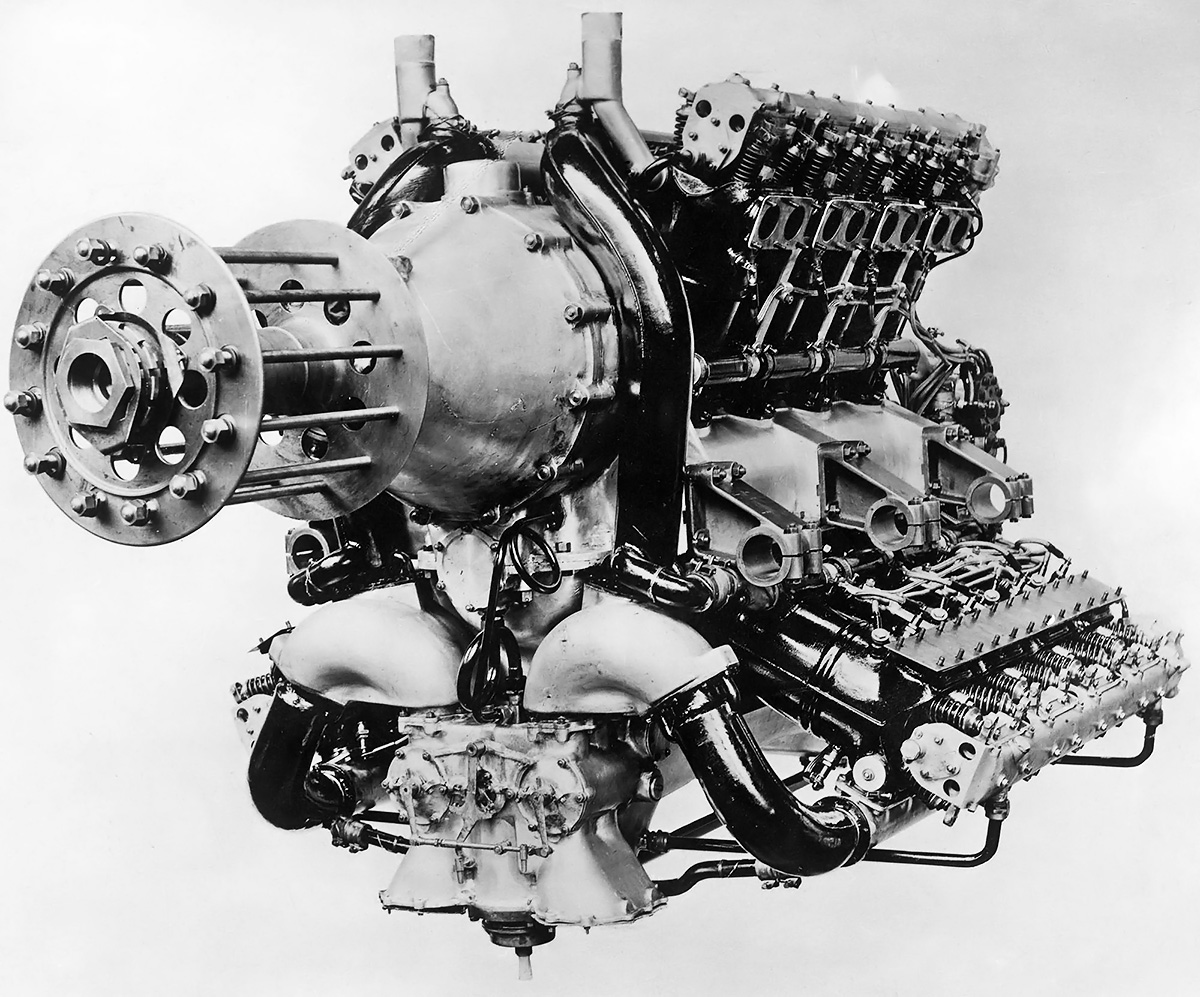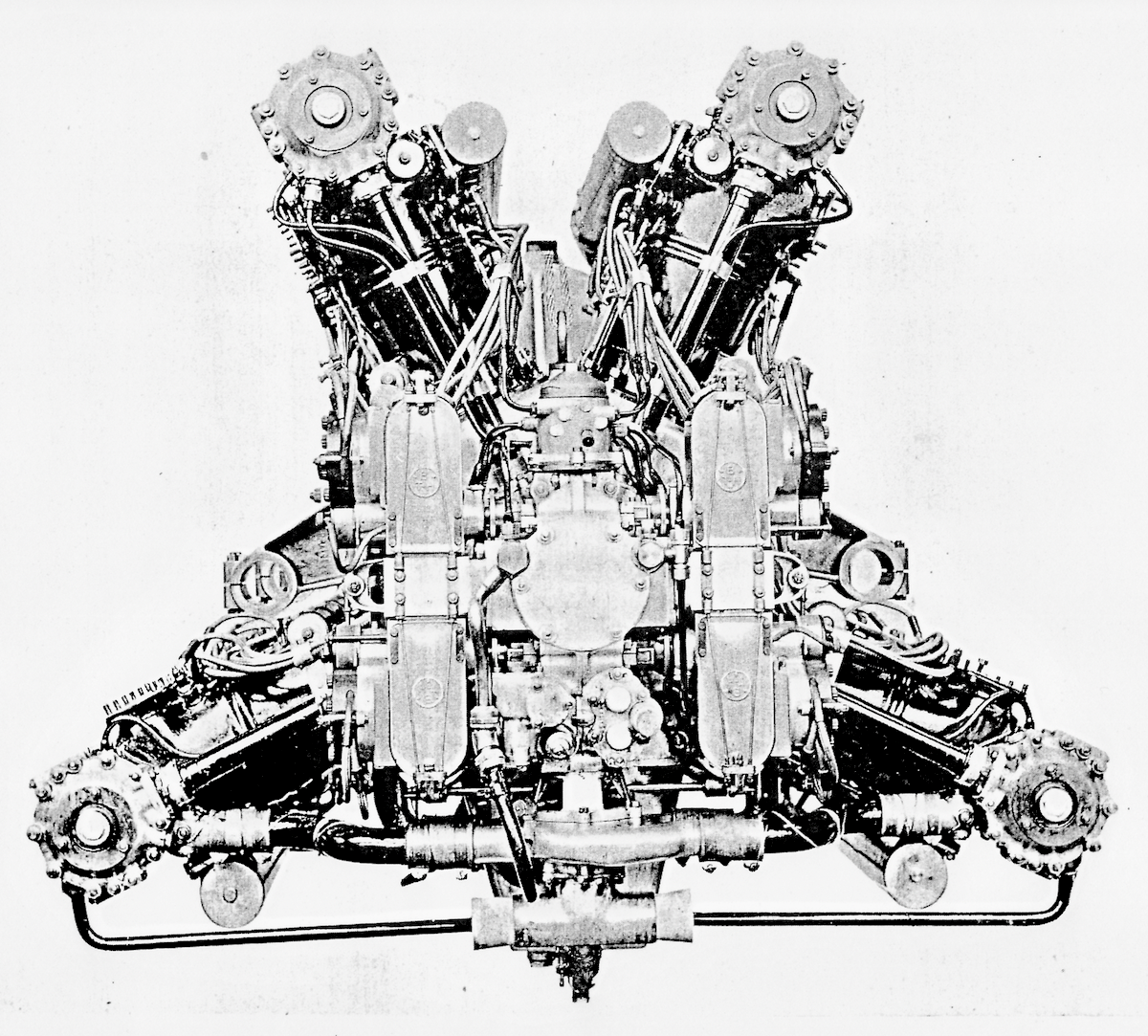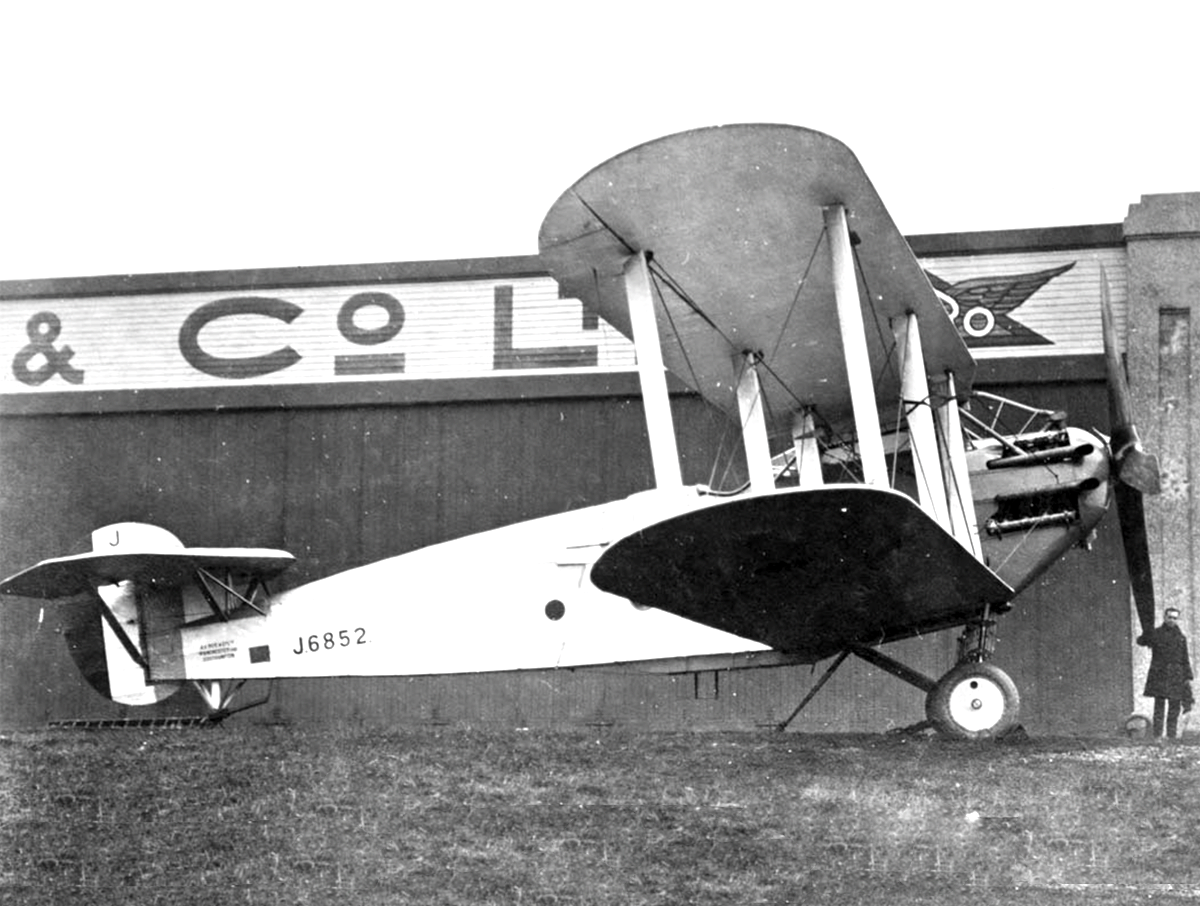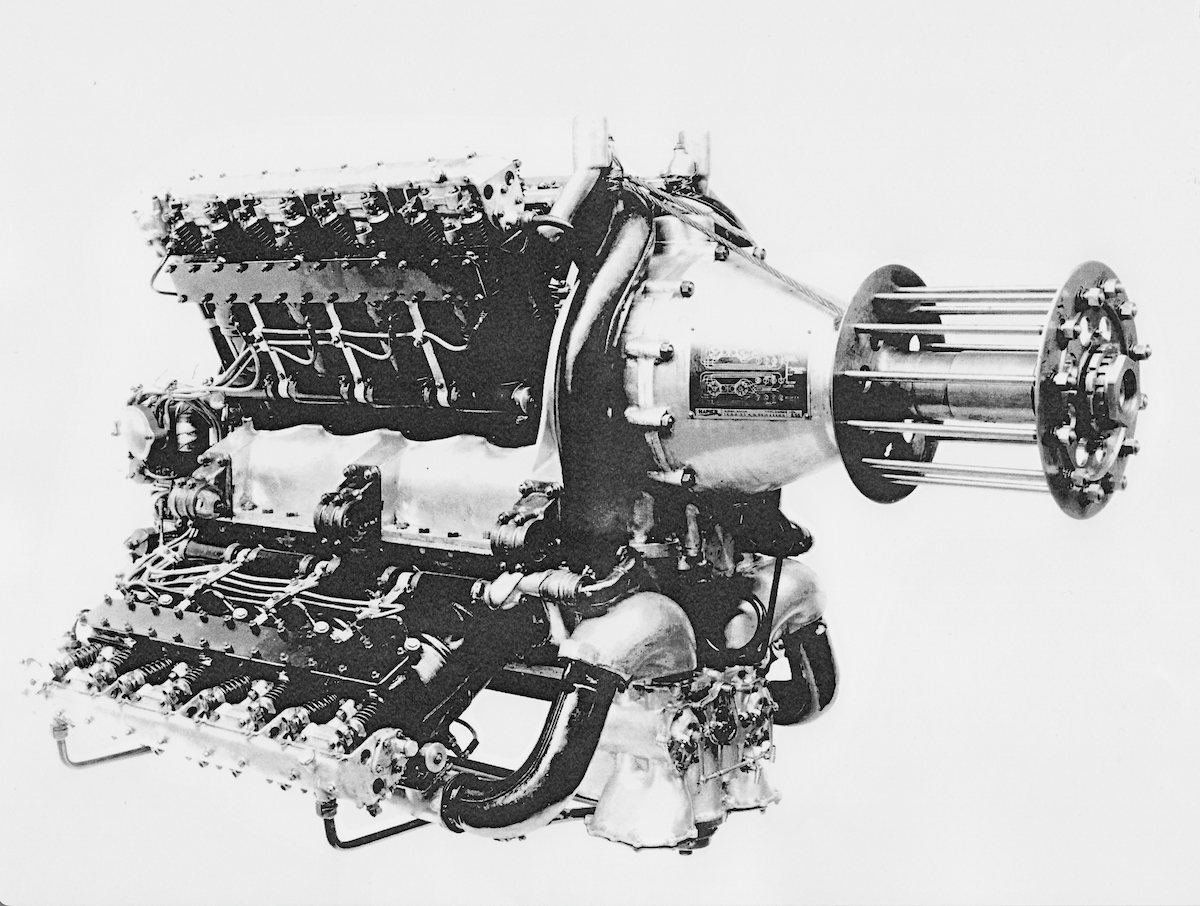Napier Cub
The Napier Cub was the world’s first 1,000 bhp aero-engine and Napier engine design E66 of 1919. The huge 60 litre capacity engine had four rows of four cylinders arranged in a squashed ‘X’ arrangement. The banks were set at 52.5 degrees (top) ad 127.5 degrees (bottom). This arrangement eased stresses on the crankshaft and made the engine easier to install.
Six prototype engines were built from 1920 for evaluation. The Cub was first installed in a modified Avro 549 Aldershot I bi-plane (J6852)) and re-designated Aldershot II. This long-range, heavy bomber first flew with the Cub on 15 December 1922 and continued to fly for around four years before being replaced by another experimental engine the 800 hp Beardmore Typhoon. Cub engines also had flight trials in both Blackburn T.4 Cubaroo single engine bombers (N166 & N167).
In 1925 the Air Ministry decided that it would be safer to develop multi-engined heavy bombers for the RAF. The engine design was briefy resurrected in 1926 as design E73 with engine No. 30007. In its final 1,000 bhp demonstration at Hendon Show powering an Avro 549 Aldershot, a reporter stated that the great power of the Napier Cub engine seemed to ‘throw its aircraft around the sky’.
Survivors:
There are no surviving Napier Cub engines.





